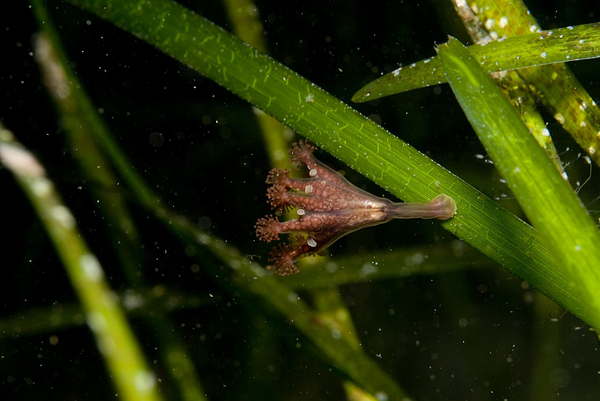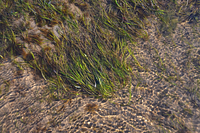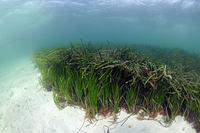_Richard_Lilley.jpg)
Seagrass Meadows
Just like terrestrial grasslands, dense patches of seagrass provides a safe haven for many colourful and charismatic animals.
Seagrass beds play a vital role in combatting global warming by absorbing excess carbon dissolved in the ocean from the atmosphere and act as natural barriers to coastal storm damage.
They also provide economic benefits as the majority of commercial fish species use seagrass meadows at some part of their life cycle.
FORMATION
Seagrasses require access to light to photosynthesise, so favour shallow, sheltered, inshore areas with good visibility.
INHABITANTS
Believe it or not, seagrasses are terrestrial plants that are able to survive in seawater. They even produce tiny flowers under water!
The UK has two species of seagrasses that make up seagrass beds – eelgrass (Zostera marina) and dwarf eelgrass (Zostera noltei). Dwarf eelgrass is the less common of the two and, as its name suggests, is shorter and thinner than eelgrass.
Their roots and rhizomes (horizontal stems) anchor the plants and absorb nutrients from the sediment.
Species found living on the surface of seagrass include snakelocks anemones (Anemonia viridis) and stalked jellyfish (animals that look more like elongated anemones than jellyfish!).

Seagrass meadows also act as nurseries for fish, including commercially important species like Atlantic cod (Gadus morhua), European plaice (Pleuronectes platessa) and Atlantic herring (Clupea harengus).
In the South of England, seagrass meadows provide a home for the UK’s two native species of seahorse! The long-snouted (Hippocampus guttulatus) and short-snouted (Hippocampus hippocampus) hold on to the grass using their prehensive tails. Cuttlefish also attach clusters of eggs, also called “sea grapes”, to the base of seagrass leaves.
LOCALISED THREATS
Unfortunately, seagrasses are experiencing a terrifying rate of decline around the world: 35% of our seagrass meadows have disappeared since 1980, and the equivalent of 1 ha continues to be lost every hour.
In adition to the large-scale threats facing the marine environment, localised threats include:
- Human pollution - agricultural and urban runoff cause algae blooms that shade the seagrass.
- Trawlers, boat propellers, and dredging damage the plants.
- Non-native cord grasses are an invasive species that move in and outcompete the native species.
Find out more and how to help these important habitats on the Project Seagrass website and through the Restoration Forth partnership initiative.


